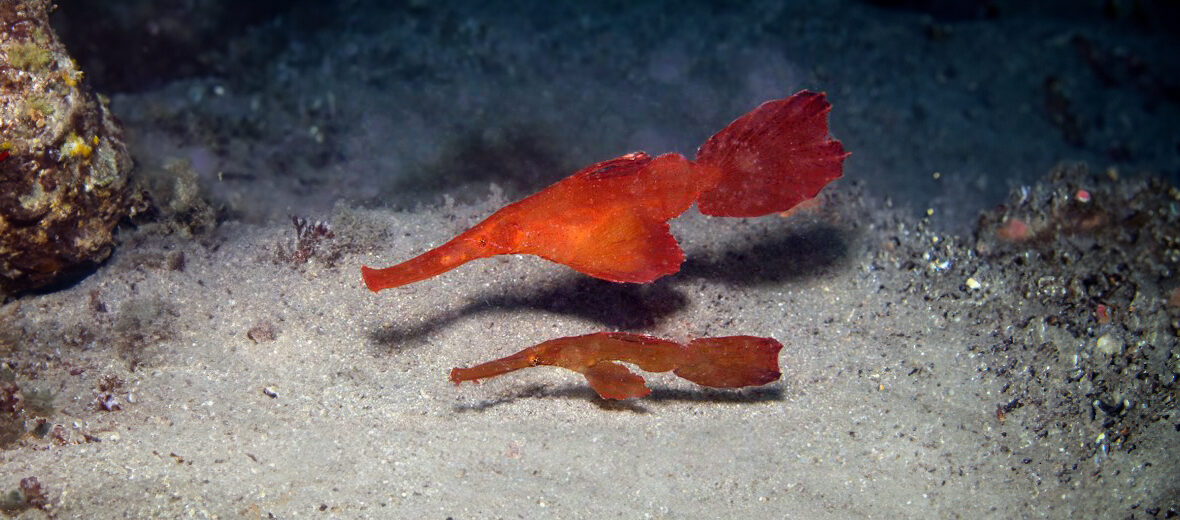
The robust ghost pipefish, aka robust-snouted ghost pipefish, blue-finned ghost pipefish, Racek’s ghost pipefish, or squaretail ghost-pipefish, is actually a species of false pipefish belonging to the family Solenostomidae. Even though they face the threats of habitat loss and destruction, overfishing, and possible over collection for the exotic pet trade, these unique fish are still abundant and listed as Least Concern by the IUCN. Their population trend is unknown at this time.
First the Stats…
Scientific name: Solenostomus cyanopterus
Weight: Up to .026 lb.
Length: Up to 5.9 inches
Lifespan: Up to 4 years
Now on to the Facts!
1.) These pipefish have the unique ability to mimic sea grass.
2.) Being bottom-feeders, these fish swim snout-down and utilize suction feeding to literally suck planktonic invertebrates into their mouth.
3.) They don’t possess teeth, so they only prey on soft-bodied invertebrates.
4.) Robust ghost pipefishes do not have true scales, but rather scattered osseous plates that serve as their outer protection.
5.) These critters were originally described in 1854 by Dutch ichthyologist Pieter Bleeker.
But wait, there’s more on the robust ghost pipefish!
6.) The name Solenichthys raceki was also considered in 1955, and given by Australian ichthyologist Gilbert Percy Whitley.
7.) The genus name “solenostomus” hails from the Greek word “solen” which means “tube”, and “stoma” which translates to “mouth” or “opening”.
Did you know…?
The larvae are well-developed, and measure approximately .12 inch, with fully-formed mouths, eyes, and spines.
8.) They only reproduce 1 time in their short life, and it’s the females who bear the young, not the males, as in seahorses.
9.) When the eggs are ready to hatch, the female releases them into the open water.
10.) Sexual dimorphism exists in these pipefish in the form of merged pelvic fins that form a brood pouch in females (which are also larger than males), and the males also possess radiating folds (called lamellae) over their olfactory organ (snout or nose).
But wait, there’s still more on the robust ghost pipefish!
11.) These interesting fishes can be found in the Red Sea and in the tropical Indo-Pacific, from the coast of Eastern Africa to Fiji, on south to Japan, and Australia.
12.) They are a shallow water fish that dwells at depths of up to 82 feet in grass beds and coral reefs.
Did you know…?
Robust ghost pipefishes have the remarkable ability to change their coloration and patterning to match surrounding sea vegetation and coral structures in up to 36 hours.
13.) The robust ghost pipefishes are monogamous (mate for life).
14.) Even though they are collected for the pet trade, they aren’t a species of interest due to their short lifespans and difficulty in care.
15.) These fish are diurnal (active during the day).
Now a Short Robust Ghost Pipefish Video!
Be sure to share & comment below! Also, check out the Critter Science YouTube channel. Videos added regularly!
Want to suggest a critter for me to write about? Let me know here.
Some source material acquired from: Wikipedia & IUCN
Photo credit: Australian Museum



